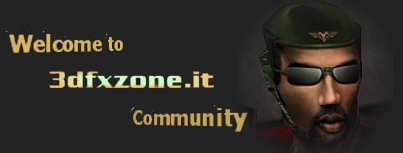- Welcome to 3dfxzone.it WorldWide Community
Notice ~
We have upgraded 3dfxzone english board: notice and user feedback here3D-Analyse on fast PC's with on-board graphics
Started by tiger@sound.net, 08 February 2004, 05:56:38
Previous topic - Next topic
User actions
